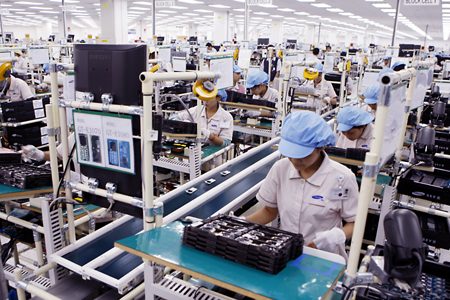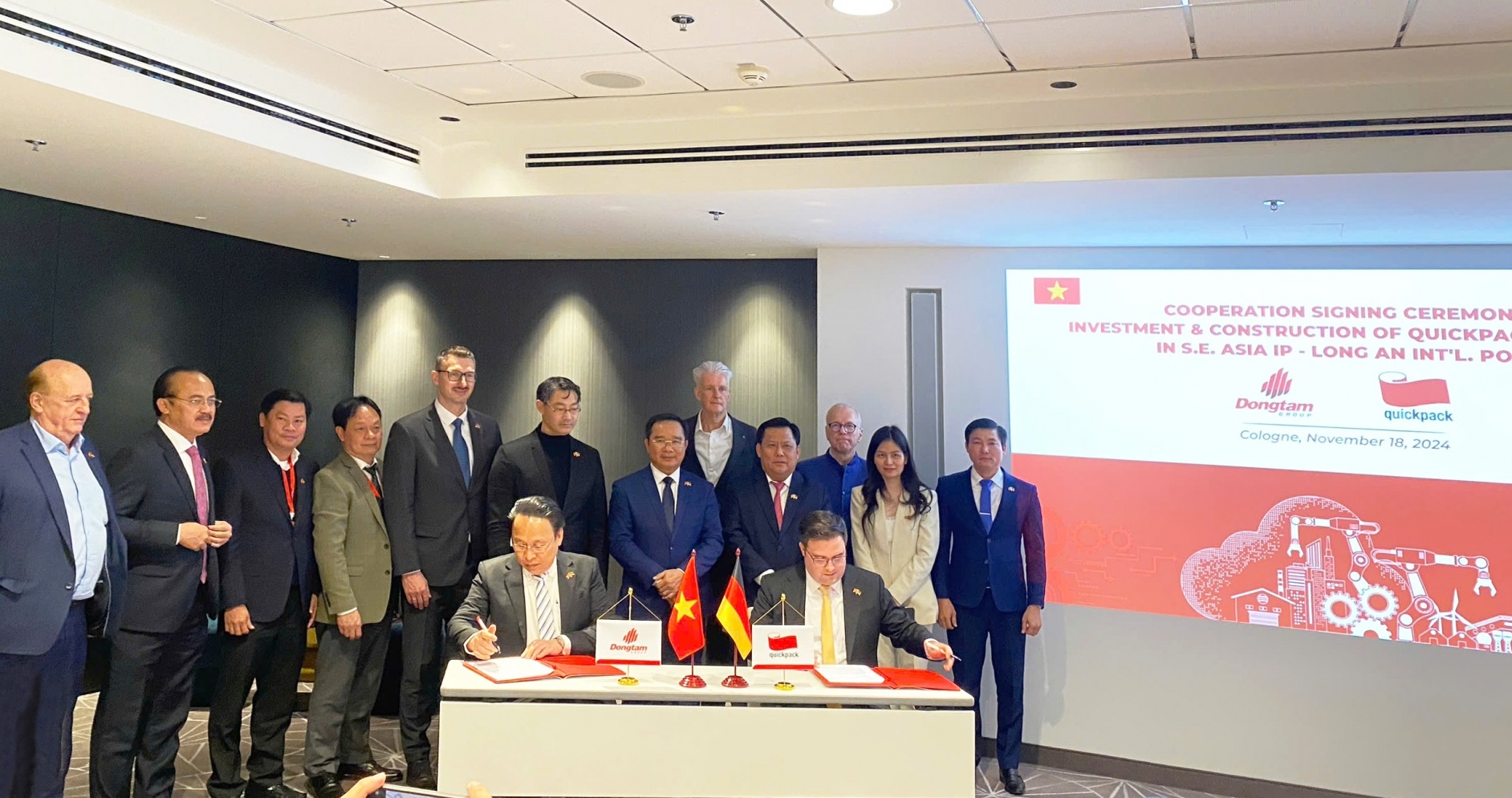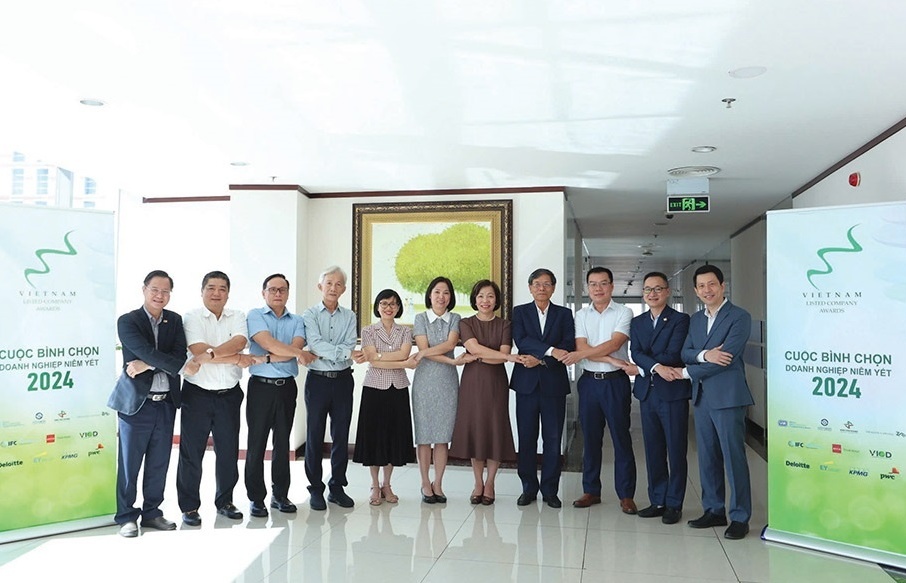Mobile phones top textiles signalling shift in economy

illustration photo
For many years, since Vietnam began its doi moi policy, the nation’s top export items consistently included garments and textiles, footwear and crude oil. But from 2012 onwards, things have changed.
In 2012, mobile phones and accessories climbed to the second position among the country’s top of export items, following garment and textile products. And last year, mobile phones and accessories topped the list of Vietnam’s key export items, with the total export revenue of over $21.5 billion. This figure accounted for one fifth of Vietnam’s total annual export revenue. Electronic components and computers also ranked the second position at $10.7 billion. Both items witnessed the highest growth in the year, with growth of 69.2 per cent and 36.2 per cent respectively. Meanwhile, the export growth of garments and textiles and footwear stood at 18.6 per cent and 15.2 per cent, respectively.
The change in export structure also reflected the shift in manufacturing industry in the country, said Nguyen Bich Lam, general director of General Statistics Office. He said robust shifts in the export structure and manufacturing industry over the past two years were mainly thanked to foreign-invested companies.
Big names flock to Vietnam
Foreign direct investment (FDI) into Vietnam had declined since 2009, after peaking at $76.4 billion in 2008, because of the global economic recession and the country’s economic slowdown. Foreign capital inflows only rebounded in the last two years, but stand way below their peak in 2008. However, during this period, Vietnam witnessed an increase in investment from multinational companies in the hi-tech manufacturing sector.
South Korea’s Samsung Electronics, the globe’s largest handset maker, from 2008 to 2013 committed to investing $5.7 billion into Vietnam. The company already owns and runs a large manufacturing complex in the northern province of Bac Ninh and is building a similar complex in the near-by Thai Nguyen province. With these complexes, Vietnam will be one of Samsung’s largest manufacturing bases in the world. The South Korean group last October also entered into a memorandum of understanding with the Ministry of Planning and Investment (MPI) for further investment in priority industries, including power, urban development, airports, chemical engineering, shipbuilding and a public information communication technology programme.
South Korean electronics giant, LG Electronics, has also followed suit, earmarking Vietnam as a major manufacturing base in Asia. This company in September last year gained an investment certificate to build a $1.5 billion manufacturing complex in the northern port city of Haiphong to manufacture home appliances and electronic components for the car and electronics industries.
The complex, covering 40.26 hectare in Trang Due Industrial Park of the Dinh Vu-Cat Hai Economic Zone, is the largest LG’s manufacturing project in Vietnam. LG will invest $510 million to develop the first phase of the complex during 2013-2017. The second phase, worth $990 million, will be built over the following six years, with products intended for domestic use and export.
Vietnam also welcomed investment expansion from many other multinational companies over the last five years including Nokia, Nidec Corporation, Robert Bosch, Panasonic and Bridgestone.
The MPI’s Foreign Investment Agency’s figures last year showed that Vietnam remains attractive to manufacturing FDI projects. In 2013, foreign investors registered to invest in 605 new manufacturing projects and expand investment in 329 existing manufacturing projects, worth over $16.6 billion. The investment in the manufacturing sector accounted for nearly 77 per cent of the total investment sum committed to Vietnam.
Time for domestic companies to join global chain
Increased FDI in the manufacturing sector benefits tax revenues, job creation and improved application of new technologies. However, some Vietnamese economists are concerned by Vietnam’s dependence on foreign-invested companies, especially when they account for two thirds of the nation’s export revenue.
But Nguyen Mai, chairman of Vietnam Association of Foreign Invested Enterprises, thinks different. “We don’t have to worry about the expansion of FDI into the country. In contrast, I see a big opportunity for domestic companies to grow and improve their competitiveness,” said Mai, suggesting that domestic companies could take the advantage of technologies transferred from multinational companies to join the global supply chain.
Mai added that when foreign companies make an overseas investment, they usually create backward links as firms purchase goods and services from firms in upstream industries. In this case, FDI may affect domestic firms through direct knowledge transfers from foreign companies to local suppliers.
But in Vietnam, the backward links created by multinational companies are still modest, according to an Industry Investor Survey 2011 conducted by the MPI and the United Nations Industrial Development Organisation.
According to the survey, stand-alone foreign-invested enterprises are more likely to procure a higher share of their production input requirements domestically. The share of domestic suppliers as a proportion of the total number of suppliers stands at 56.4 per cent for stand-alone foreign-invested enterprises, compared to 43.9 per cent for multinational companies.
The government recently recognised this opportunity and is moving forward to take advantage of the benefits it offers.
What the stars mean:
★ Poor ★ ★ Promising ★★★ Good ★★★★ Very good ★★★★★ Exceptional
Latest News
More News
- Trump's trade policies could shape Vietnam's economic outlook: Dragon Capital (November 15, 2024 | 16:56)
- Prioritising corporate governance for Vietnam’s sustainable growth (November 14, 2024 | 16:50)
- Vietnam eyes nuclear revival to bolster energy security (November 14, 2024 | 16:46)
- German businesses explore investments in Dong Nai (November 08, 2024 | 18:02)
- Vietnamese consumer sentiment outperforms regional averages (November 08, 2024 | 18:00)
- Exchange and interest rates forecast to remain stable after US election (November 07, 2024 | 14:04)
- Industrial real estate stocks benefit from US election results (November 07, 2024 | 13:56)
- 2024 sees $1.41 billion in fintech funding so far (November 07, 2024 | 08:13)
- Trump at 266 electoral votes, Harris at 195: US media (November 06, 2024 | 14:30)
- Hanoi targets digital and high-tech investment with upcoming event (November 06, 2024 | 13:28)

















 Mobile Version
Mobile Version